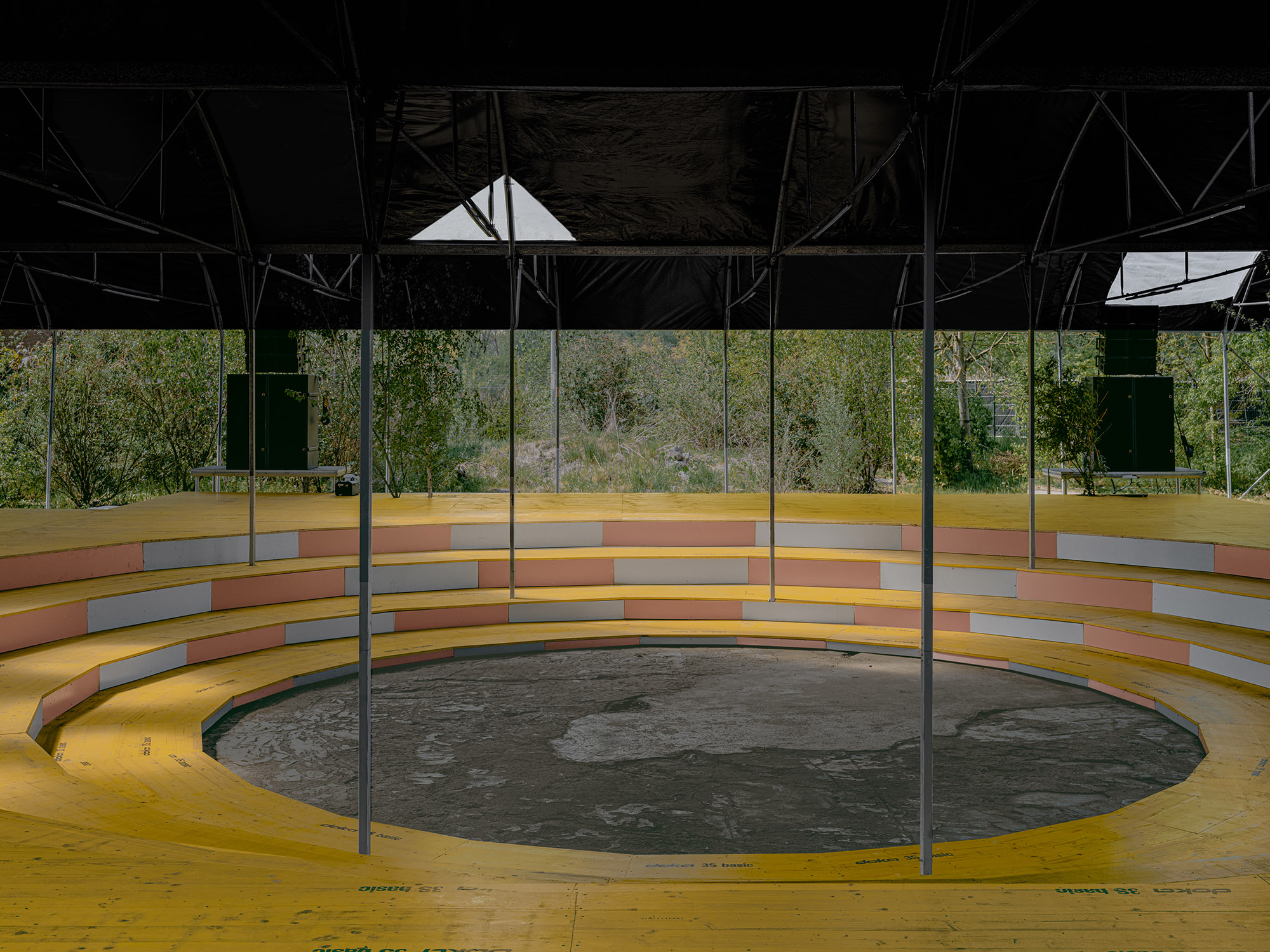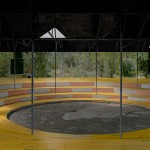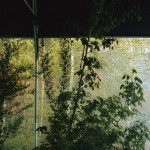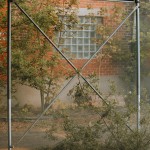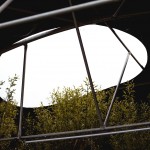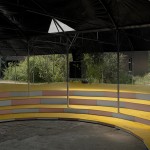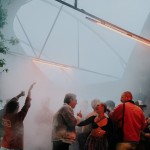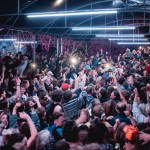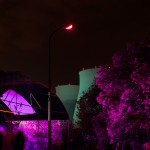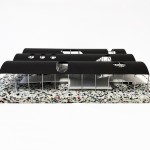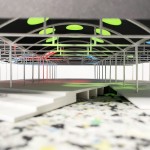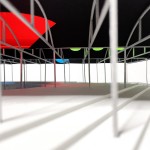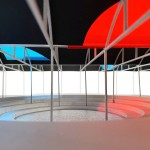2022 ROTUNDA
ROTUNDA
Vilvoorde (Belgium), 2022
The intervention updates the greenhouse structure Unglued built by Rotor in 2021, over a concrete basin of the original military facility. It is based on the insertion of two classic architectural devices: a polygonal cavea expanding into a larger deck, and a system of oculi opened into the roof. The deck rises the dancing crowd from the ground: it provides an elastic response to its movement, reverberating the beat. The oculi provide new geometries of light and shadow, breaking the optical perception into discontinuous fragments. The project pragmatically responds to a need for more space for dancing while triggering unpredictable long-term uses.
The 470 sqm deck is built on irregular ground with a supporting structure made of recovered wooden beams, paved with Doka formwork panels. The yellow floor is suspended about 60 cm above the ground and it is accessed by two stairs made of concrete blocks on the south-west corner. The arena occupies the opposite portion of the deck and descends 1 meter into the concrete pit to reach the level of the exi-sting circular platform. Its plan is based on a 24 sides polygonal geometry articulated on 3 steps. The deck is activated by DJ and live concerts stages along its perimeter during the festival: the position of these temporary “rafts” determines the specific orientation of the performance from time to time.
A black roof floats above the forest of thin steel pillars intersecting the deck. It is perforated by the varied geometries of the oculi, whose position and size are indifferent to the regularity of the greenhouse frames. The seemingly solid roof is in fact made of shrink foil tensioned on the metallic beams.The holes cut in the roof project new geometries of light and shadows on the yellow floor below, constantly changing the perception of the performance space over the course of the day and night.
stage for Horst Arts and Music Festival, 2022 edition
feasibility study, final design, construction management
client: Horst
surface: 470 sqm
photos: Jeroen Verrecht, Illia Steirlinck, Dieter Van Caneghem, Elias Derboven, Maxim Verbueken
